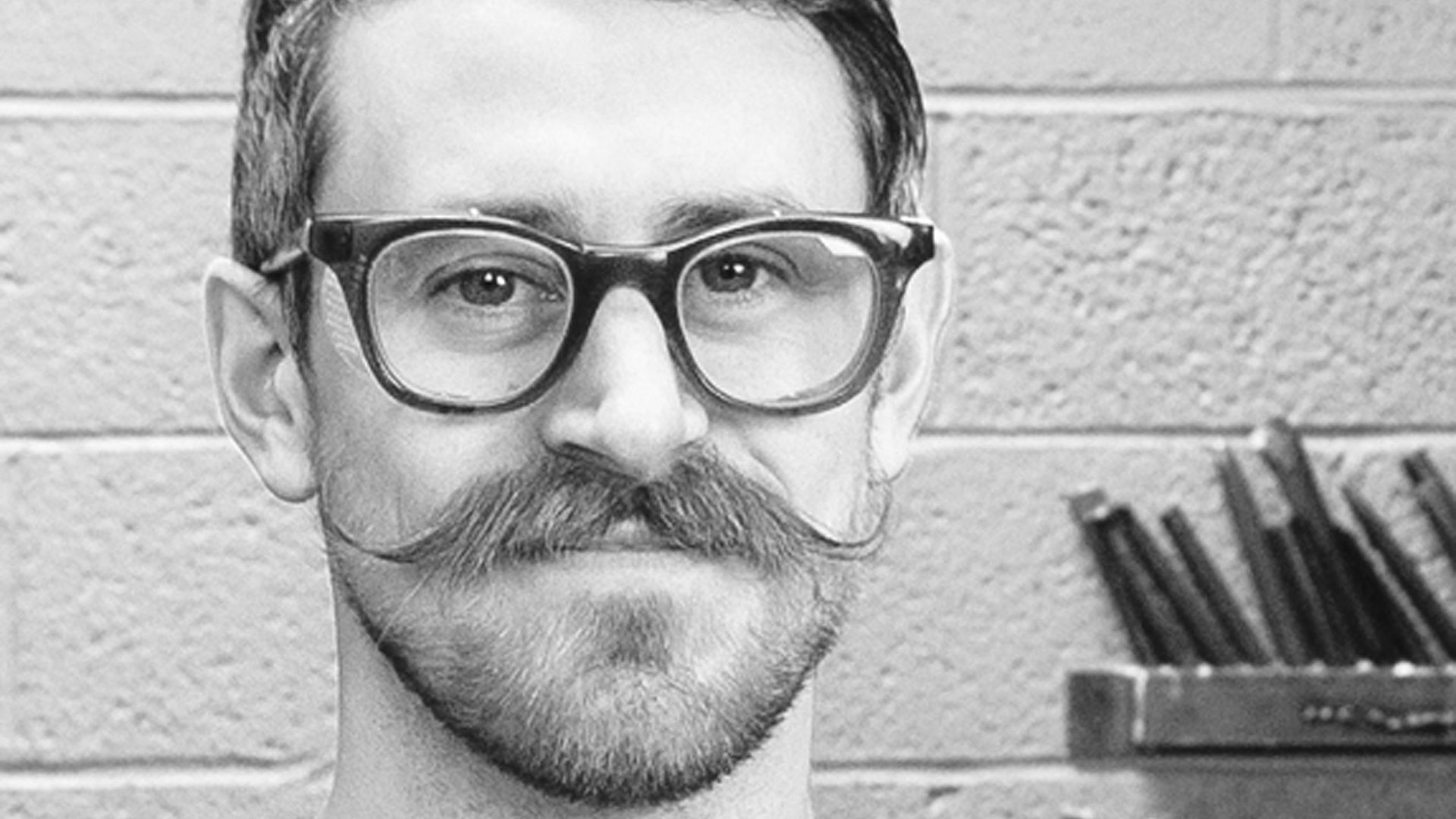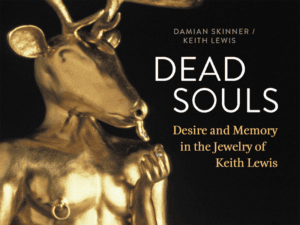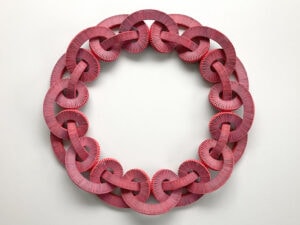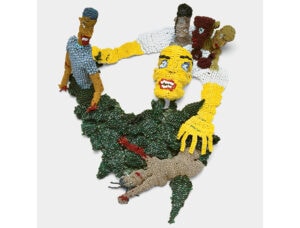‘Affective Objects: Art, Design and the Image of Craft’ was a lecture by Glenn Adamson in which an unfailing theorist animated his well-published philosophies in a new and entertaining way. Adamson’s keynote presentation, on May 27, 2011, kicked off three days of lectures at the Society of North American Goldsmiths Conference (SNAG). Adamson, the deputy head of research and head of graduate studies at the Victoria and Albert Museum in London, began his lecture by grinding a lens through which the lecture was to be viewed. For those familiar with Adamson’s writing and theoretical pedagogy, he was true to form and approached the subject of contemporary metalwork through expansive thematic and cultural positions that situated it as a subject – as opposed to a narrowly defined practice. Ultimately, the lecture delivered an entertaining and highly eloquent conception of contemporary metalwork, but struggled to establish and prove a cogent thesis.
Adamson’s subject, ‘affective objects,’ sprang from the historical ideologies of Thomas Carlyle and John Ruskin, whose preservationist attitudes towards handwork were cited as early examples of theorists characterizing craft as personal, intimate and even familial. After introducing Felix Gonzalez-Torres’s 1991 work (Untitled) Portrait of Ross in LA as ‘craft-like’ and affective in its interactive and personal qualities, Adamson proclaimed that this work was an affective image of craft rather than an article of craft. Here Adamson revealed what the lecture was to be about: the nebulous marginal space between the image of craft and the craft object.
Right away Adamson started in on metalwork-as-image, beginning with John Singleton Copley’s 1768 painting of silversmith and American Revolutionary icon Paul Revere, whose physical contact with a teapot in the painting grounded it in the affective and personal. Adamson also seized on the generally perceived image of metal as cold, threatening and impersonal. ‘Metal is the substance of machines,’ and ‘Uniquely among the crafts it exists in a state of permanent potential for bodily harm.’ Adamson wondered aloud how metalworkers could mediate that condition. Thus a tension between the affective and the impersonal was established.
Adamson’s historical case studies were varied. He cited the promise of egalitarian silver in the Bauhaus as a fallacious image due to the indispensable handwork involved. Industrial designers Brooks Stevens and Raymond Loewy were guilty of misrepresenting their involvement in the physical design and fabrication of their works. The coup d’état of this line of inquiry was a Chrysler advertisement for the Jeep Cherokee, which Adamson called ‘the most fraudulent commercial of 2011.’
Perhaps one of the most entertaining moments of the lecture was watching Adamson systematically rebuke Chrysler for their usurpation of craft’s virtuous image to sell clearly mass-produced objects which were neither forged nor hewn, as the commercial suggested. Adamson dismissed the advertisement as mere nationalistic flag-waving.
It was at this point that the viewer might have realized that Adamson was juggling too many balls. Adamson’s inquiry oscillated between the affective object and the image of craft. These themes persisted throughout the lecture but were never resolved into a cohesive framework. As Adamson moved into contemporary examples of metalwork, largely from the contemporary art and design realms, it became clear he had set up the dual frames of ‘affective object’ and ‘metalwork-as-image’ in order to have more tools to craft his analysis.
Charles Ray and Vija Celmins both used exacting reproduction, or doubling, as a means to disrupt our perception of an original object, while a material slippage was created by Susan Collis and Jeff Koons in their transmogrification of mundane objects such as screws (Collis) and plastic bunnies (Koons). Of course, the most vulgar and spectacular display of material slippage was Damien Hirst’s For the Love of God, a platinum cast of a human skull encrusted in diamonds. Creating an image of metalwork activates all of these artists’s works. With Marc Quinn’s golden, contorted, figurative sculpture of supermodel Kate Moss, entitled Siren, Adamson delved into the multivalent imagemaking that happens when material context is combined with celebrity caricature.
When Adamson’s image metric didn’t logically fit to analyze Cloud Gate, a nonobjective stainless steel sculpture by Anish Kapoor, he expertly changed tack to talk about Kapoor as presenting a misleading image of himself, much like designers Stevens and Loewy. Without a perceived relationship to the studio and thus to the physical creation of his work, Kapoor’s image would be like that of designer Marc Newson. Adamson argues that the practices of Newson and Kapoor deeply resemble one another – neither of them makes anything – but Kapoor needs us to feel affection for his work. He does so by using the illusion of a personal connection to craft.
In this roundabout way Adamson found his way back to the affective object, which then stood for the virtue of honesty-in-labor, embedded in craft production. Tomáš Libertiny’s performative construction of a stool (The Weldgrown) using a welder and a lathe while wearing a Fendi leather jacket created an affective image of the clothing company as if by some magical associative property. Droog Design’s Do Hit Chair, that users mold themselves with an included sledgehammer, was affective by implicating the end-user in its creation. Adamson moved swiftly sideways to discuss Myra Mimlitsch-Gray’s Handwrought Brass Tray that activated the affective image of hammer marks through scale shift and doubling. From there Adamson considered Lauren Kalman’s Hardwear, which was perhaps the most direct example in the lecture of the image of metalwork and its (in)affectiveness functioning together. Adamson finally found a work where his reading of metal as cold, impersonal and threatening was exploited. Kalman presents the work in image form – as theatrical vignettes – of a performative gesture fixed in time as a photograph. Maisie Broadhead too uses photographs, linking metal and image. Jewellery Depicted restages historical paintings as photographs and pairs them with fabricated jewelry objects appropriated from the original.
Obviously, Broadhead’s work activates metalwork through her image-making practice, though Adamson’s characterization of metal as cold was eschewed in favor of simply letting the affective stand for the personal, intimate and handmade themes in the work. Here again, in the work of an interdisciplinary artist with a practice rooted in metalwork, Adamson’s dual conception of the image of craft and its relational affectiveness seemed to resonate most strongly.
Hurriedly, Adamson closed by coming full circle with Roni Horn’s Paired Gold Mats, for Ross and Felix, two four–by–six foot sheets of gold leaf that rest one atop the other. In lieu of a conclusion, Adamson used Horn’s work to reconnect the audience to Felix Gonzalez-Torres, who was mentioned at the beginning of the lecture. Horn’s work was a nightcap. Adamson supplanted the image of metal as cold, impersonal and threatening with a warm and poetic ode to the enduring affection of two dead lovers.
Of course when the lights came up, one was nearly struck dumb by Adamson’s rhetorical mastery, the elasticity of his mind and the dexterity of his syntax. One struggled to keep pace with his oscillating analysis and the depth of his synthesis. As a performance, the lecture succeeded brilliantly. Upon reflection and close scrutiny, I am not sure that anything was proven or could be concluded from this lecture other than Adamson’s own brilliance. But this may only be a concern if we are wedded to the idea that a lecture must prove a theory or present new original research. Because of Adamson’s pole position, both at the conference and as a theorist, there was an implicit assumption that he would pander to the audience, but any expectations of ‘affective objects’ were left unrequited. With little focus on actual objects, the lecture succeeded in exploring how contemporary artists use the image of metalwork to create new material and cultural contexts.
For those who share Adamson’s expansive view of craft I suspect this was an exciting peek into the genre of metalworking as an art-making practice – much as fiber media has become a widely exploited strategy in contemporary art. In casting his net so broadly without preamble, Adamson’s ability to be instructive to his notoriously insular audience may have eluded him. However, the many thematic frames Adamson presented hopefully increased the breadth of practitioners’ thinking about their own practice by pointing to a more inclusive and holistic theory of contemporary metalwork. Proven thesis or not, there is little choice but to consider Adamson’s performance, as well as his demonstration of inclusivity, a success.




